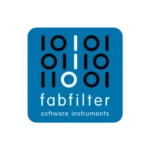How to Create VST Plugins – Beginner to Pro 2025 Guide

Table of Contents
If you’ve ever asked yourself how to create VST plugins, you’re in the right place. In 2025, the tools and resources to build professional audio plugins are more accessible than ever—even if you’re not a coding wizard. Whether you’re a musician curious about digital audio or a developer wanting to dive into audio tech, this guide walks you through everything you need to know.
🧱 1. Understand What a VST Plugin Is
VST (Virtual Studio Technology) plugins are audio processing tools—like EQs, compressors, synths, or delays—that run inside DAWs (Digital Audio Workstations). Created by Steinberg in the 1990s, VSTs are still the standard for music production plugins.
🔧 2. What You Need to Start Building VSTs
Before you write a single line of code, here’s what you need:
| Requirement | Recommended Tools |
|---|---|
| Programming Language | C++, Rust |
| Audio Framework | JUCE, iPlug2, Dplug (for D) |
| IDE (Code Editor) | Visual Studio, Xcode, CLion |
| DSP Knowledge | Basic signal flow & audio math |
📚 3. Learn DSP (Digital Signal Processing) Basics
Creating a plugin means manipulating audio signals. Start with:
- Understanding waveforms (sine, square, triangle)
- Filters (low-pass, high-pass, band-pass)
- Gain structure and headroom
- Envelopes (ADSR) and modulation
Resources like “The Audio Programming Book” or online courses on DSP can get you up to speed fast.
🔨 4. Choose a Framework: JUCE vs. iPlug2
| Feature | JUCE | iPlug2 |
|---|---|---|
| Language | C++ | C++ |
| GUI Support | Extensive (custom UIs, SVGs) | Lightweight, flexible |
| Licensing | Commercial & Open Source | Fully MIT (free, open) |
| Popularity | Industry standard | Indie devs love it |
JUCE is great for commercial-grade plugins, while iPlug2 is perfect for fast, open-source-friendly development.
⚙️ 5. Building Your First Plugin (Step-by-Step)
- Install JUCE and create a new Audio Plugin project.
- Configure plugin formats (VST3, AU, etc.)
- Write basic DSP in
processBlock()(gain, filter, etc.) - Design UI in the GUI editor or custom code.
- Build & export to test in your DAW.
🤖 6. Modern IDEs Like Cursor and Windsurf (2025 Boost)
In 2025, new AI-powered IDEs like Cursor and Windsurf are changing how developers write code. While they don’t replace frameworks like JUCE, they dramatically accelerate the development process.
Why They’re Game-Changers:
- AI suggests full DSP blocks or boilerplate code.
- Can auto-complete plugin parameter bindings.
- Works like a coding assistant trained in audio dev.
Example Use Case: You describe “I want a stereo widener with a width knob” and Cursor can generate the basic code structure and even comment it.
So if you’re asking, “how to create VST plugins” faster? These AI IDEs are your secret weapon.
💡 7. Testing & Deployment
- Use free DAWs like Tracktion or Cakewalk to test your plugins.
- Validate CPU usage and latency.
- Consider signing your plugins and packaging with installers.
🧠 Final Thoughts: What I’ve Learned
Creating VST plugins isn’t just about code—it’s a mix of creativity, DSP knowledge, and experimentation. My advice? Start simple. Even building a gain plugin teaches you tons. Then explore JUCE or iPlug2, and when you’re ready to speed things up, give Cursor or Windsurf a try. They’re not magic, but they help you skip the boring parts.









cool guide